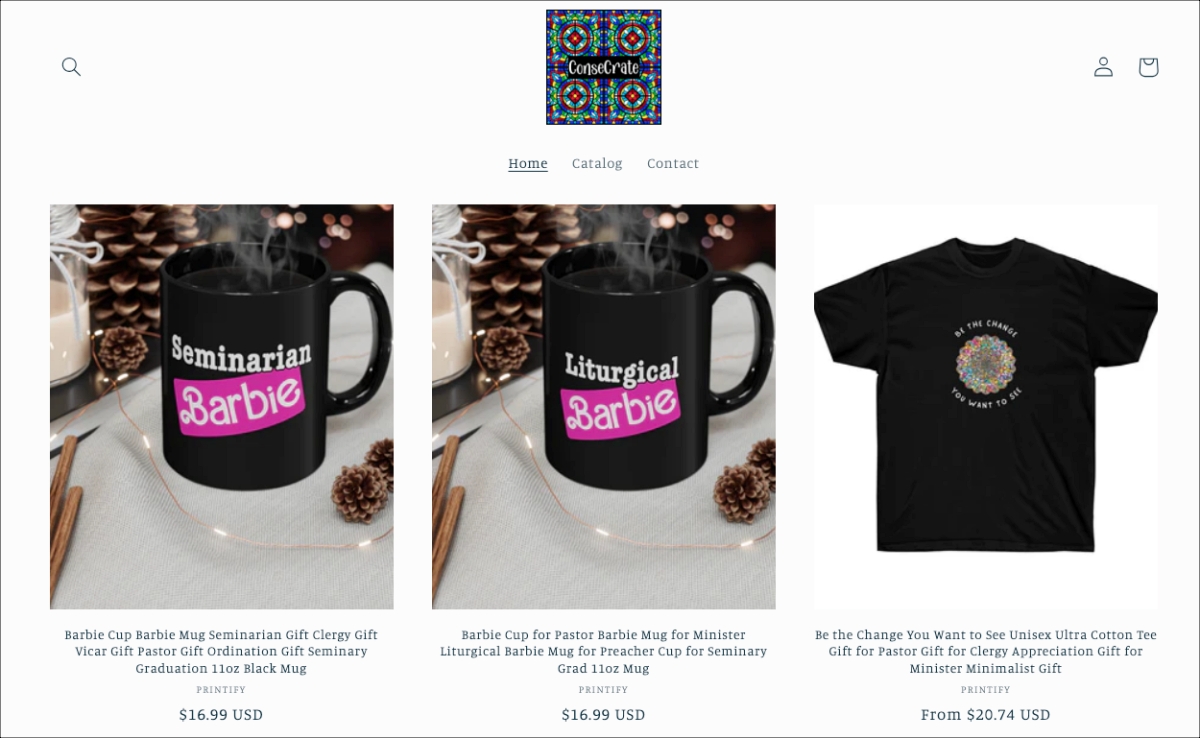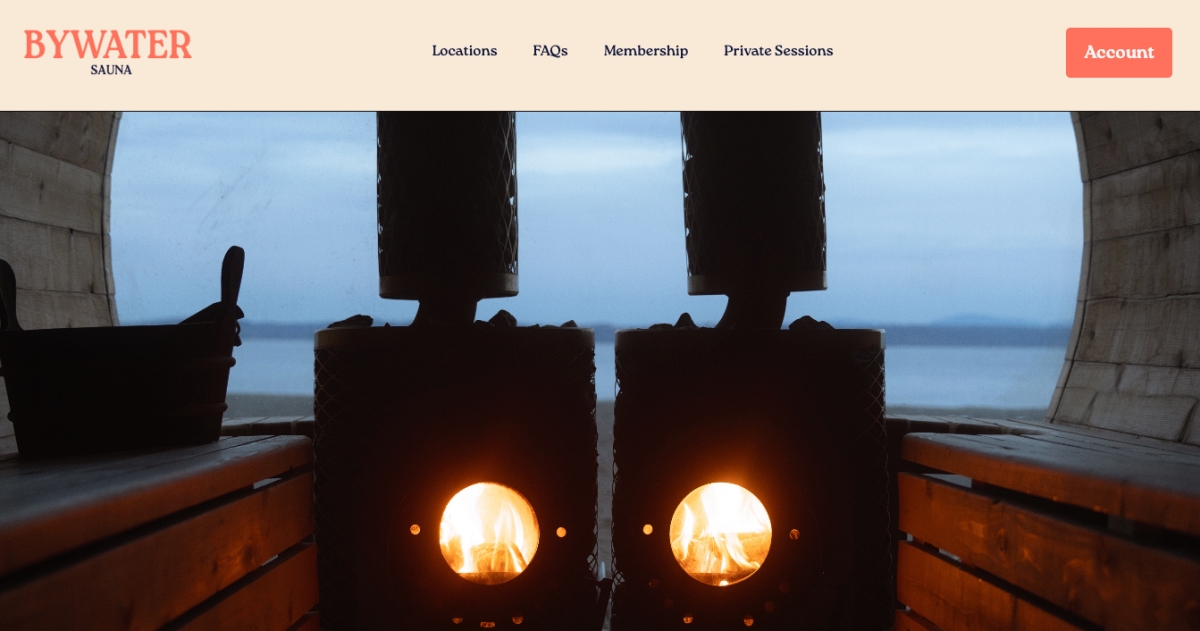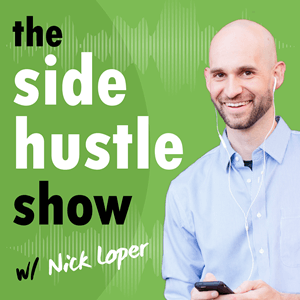
This is normally a Thanksgiving tradition on the show, but I’ve seen so many fun ideas come across my desk this year, and we just couldn’t wait!
Welcome to Round 8 of Creative Side Hustle Ideas.
And to help out with this round, I’m joined by someone who’s no stranger to the side hustle world.
As the CEO of Flippa.com, the number one platform to buy and sell online businesses, Blake Hutchison has had a front row seat to thousands of profitable side projects.
Today, he’s here to share that perspective with us.
This is the 8th installment of the series, so I encourage you to check out the previous episodes if you like this format, make sure to grab the full playlist here.
Here are the past editions if you want to see them individually:
- 10 Creative Side Hustles Part 1 – 2018
- 10 Creative Side Hustles Part 2 – 2019
- 10 Creative Side Hustles Part 3 – 2020
- 10 Creative Side Hustles Part 4 – 2021
- 10 Creative Side Hustles Part 5 – 2022
- 10 Creative Side Hustles Part 6 – 2023
- 10 Creative Side Hustles Part 7 – 2024
Let’s talk about this year’s most innovative money-making ideas!
Sponsors
- Mint Mobile — Cut your wireless bill to $15 a month!
- Indeed – Start hiring NOW with a $75 sponsored job credit to upgrade your job post!
- Quo (formerly OpenPhone) — Get 20% off of your first 6 months!

- Shopify — Sign up for a $1 per month trial!
- Policygenius — Compare free life insurance quotes from top companies and see how much you could save.
1. 3D-Printed Croc Charms

Michael Satterlee, a 17-year-old high school student from New York, is on track to do $300,000 in revenue this year with his business Solefully, selling 3D-printed charms for Croc shoes.
His product lineup includes:
- miniature V6 engines
- wheels
- excavator attachments
- tractor treads
- even creepy fake toe charms
With products priced at $9.99 for a single pack or $16 for a two-pack, and estimated material costs around $0.25 cents, the margins are exceptionally strong.
Michael credits TikTok Shop and Instagram for his success, building an audience of 109,000 followers. The products have natural virality — people see these creative designs and immediately want them. His shop has accumulated over 390 reviews, with the vast majority five-star ratings.
The barrier to entry is relatively low.
A beginner 3D printer costs $300-400, with higher-end models capable of multicolor printing running around $500-1,000. The real work is in creating designs that resonate and building a social media presence.
What makes this particularly replicable is that the designs are relatively simple, and platforms like Etsy, TikTok Shop, and Instagram have made it easier than ever to reach customers without needing your own e-commerce infrastructure.
2. Amazon Kindle Publishing
A publisher generates $4,000 monthly profit through Amazon Kindle Direct Publishing, focusing on RVs, national parks, and outdoor adventures.
The operation includes 12 titles priced at $9.99 each, with topics like outdoor adventure guides, nature guides, and travel books.
Amazon KDP requires no inventory, no printing costs, and Amazon handles distribution. Publishers optimize titles and descriptions like they would for search engines, working the Amazon ecosystem to reach people actively searching for content.
The business has built credibility with 66 reviews averaging 4.5-stars. The content is largely evergreen — national parks don’t change much, so these books can sell for years without major updates.
Producing 12 titles in a year requires significant effort, whether writing personally, hiring ghost writers, or using AI assistance. The marketplace is crowded since KDP is accessible to everyone, but once you establish credibility and reviews, it’s difficult to get unseated.
Books like “Atomic Habits” and “48 Laws of Power” prove that well-positioned titles can generate income for years or even decades.
3. $999 Drunk Website Audits

Richard Littauer created The User Is Drunk, a website audit service with a memorable twist: he reviews your site while intoxicated to test whether it’s simple enough for anyone to use.
The concept went viral about 10-12 years ago with pricing around $999 per audit (the original pricing may have varied). The premise is straightforward — if a drunk person can’t figure out your website navigation, it’s too complicated.
Littauer also created a sister site called The User Is My Mom, where his mother attempts to use websites and provide feedback on usability issues. Both services tackle the same problem: many websites have confusing user flows that frustrate visitors.
The genius here isn’t the alcohol consumption but it’s the positioning. Website audits and usability reviews have always been valuable services available on platforms like Fiverr and Upwork for as little as $5. But the unique, memorable hook allowed Littauer to command significantly higher prices for essentially the same service.
4. Faceless YouTube Channels

Latest Hoops demonstrates how faceless YouTube channels can generate substantial income by curating existing content around specific topics. The basketball-focused channel covers NBA and WNBA content.
The creator doesn’t appear on camera or produce original footage. Instead, they curate clips from NBA legends, create compilations like “Michael Jordan versus Larry Bird,” and topics like “NBA players’ careers destroyed by girlfriends.”
Revenue comes from YouTube’s ad engine. Social Blade estimates Latest Hoops earns up to $40,000 annually.
These faceless channels have become increasingly popular on Flippa, where they sell for anywhere from $10,000 to half a million depending on audience size and engagement. The faceless format makes them more transferable since they’re not dependent on a specific personality.
AI tools now assist with script writing, video editing, thumbnail design, and idea generation — lowering the barrier to entry but also increasing competition. Success requires either deep knowledge of your niche or finding ways to execute better than the hundreds of others trying the same approach.
5. $40k in Claw Machines Stuffies

Mike Nay turned his skill at claw machines into a $40,000 side hustle by winning plush toys and reselling them online.
The items typically sell for $15-25, with Mike’s acquisition costs ranging from $3 to $7 per win. The ROI is solid — though the time investment is substantial.
The reseller sells the plush toys through online marketplaces, likely banking on either the story behind acquisition or potentially rare, limited-edition items only available through claw machines.
My question: couldn’t you source similar plush toys directly from Alibaba or wholesale suppliers for similar or lower costs? Probably. But if the appeal lies in collector’s items only available through arcade games, or if customers value the “I beat the system” story, then the claw machine route makes sense.
This works if you genuinely enjoy the arcade experience and have developed legitimate skill at these games. For most people, there are likely more efficient inventory acquisition methods. But if this was already your hobby and you’ve mastered the mechanics, why not monetize it?
6. Newsletter Ecosystem
A creator runs Remote Work Opportunities, a Beehiiv-hosted newsletter generating income through advertising and affiliate revenue by curating remote job listings and career tips.
Revenue comes from two streams: display advertising within the newsletter and affiliate commissions when readers click through to job sites and apply for positions. As the subscriber base grows, so does the earning potential from both channels.
Platforms like Beehiiv and Substack have made newsletter publishing accessible without requiring technical knowledge of email marketing tools or CRMs.
Local newsletters represent a particularly interesting opportunity. Ryan Sneddon had nearly half the town’s population subscribed, charging local businesses for advertising spots. While there’s a natural ceiling based on town population, the model proved highly profitable.
The key advantage of local content is scalability — once you’ve built the system in one city, you can expand to the next town over. This fills the void left by declining local newspapers and positions you as the community voice. Daily Candy famously executed this strategy, starting in New York City before expanding to 12+ US cities and eventually selling to Comcast for $125 million in 2008.
Newsletters now trade on Flippa for $10,000 to $500,000 depending on subscriber count and engagement levels. Success requires either unique curation, exclusive insights, or access to a specific community.
7. Skin-Colored Socks

Leila Quraishi started Nudesox in high school with a simple question: Why weren’t there athleisure socks in actual skin tones? Seven years later, her no-show sock brand is on track to hit seven-figure revenue next year.
Leila started the business with $10,000 and never took outside funding. She focused on slow, steady growth and reinvested every dollar back into the business — improving product quality, handling larger orders, and building retailer confidence.
Her breakthrough came when QVC picked up the product. In her first show, she sold over 500 pairs of socks per minute.
Leila grew up watching Shark Tank and understood early that mentors could accelerate success. She cold-emailed executives and influencers in fashion, but only reached out to those with clear common ground. She built a tight network of trusted advisors who helped her navigate challenges and avoid people trying to take advantage of her inexperience.
The brand is now on track to sell over 30,000 pairs this year with strong customer loyalty and major distribution partnerships.
What’s particularly notable about e-commerce right now is its defensibility compared to other business models. While AI disrupts software and content businesses, physical products remain relatively untouched — people still need to buy socks from somewhere.
8. Geometry Spot

Jerry, a 16-year-old from just outside New York City, built Geometry Spot — a website that appears to be about learning geometry but is actually a gaming portal for students trying to play games at school. The site generates $50,000 monthly from ad revenue.
The homepage displays educational content like “Exploring the Geometry of Circles” and “Introduction to Trigonometry.” But click the “Activities” button and it transforms into a games portal featuring Roblox and other titles that students can access on school laptops.
It’s essentially a disguised gaming site that helps kids bypass school restrictions. If a teacher walks by, students can quickly switch back to the geometry content. The concept went viral across US high schools through word-of-mouth and organic search.
The site now receives just under 5 million monthly page views, with 73% coming from organic search and 95% from US visitors. His top keyword rankings include “geometry spot” and various gaming-related terms.
He manages 110 million page views across multiple similar websites, with 261% revenue growth over the past six months as more students discover the platform.
9. Subscription Box for Ministry

Ruth Hetland runs Consecrate Box, a subscription box for women in minstry.
While the box isn’t open to new customers, Ruth reported crossing 500 paying subscribers. “I can’t really grow it any more than I have or else I wouldn’t be able to continue doing my other work,” she explained.
Each box contains 4-6 locally sourced items “made for smart, progressive, and slightly irreverent ministers.” The concept came from listening to Side Hustle School, where an episode featured a woman running a successful subscription box for military wives.
She floated the idea in a Facebook group of Lutheran women in ministry and received overwhelmingly positive responses. With virtually no entrepreneurial experience, she used another podcast called “Subscription Box Basics” and followed the instructions step by step to launch the business.
The subscription commerce model gained significant momentum during COVID, and platforms like Cratejoy have emerged as both fulfillment services and discovery engines for niche subscription boxes.
The key is finding a passionate community with specific needs and interests that aren’t being adequately served by mainstream products.
10. Mobile Sauna Rental

Bywater Sauna operates a mobile sauna service at Golden Gardens beach in Seattle, charging $35-40 for 60-minute sessions where customers cycle between the hot sauna and cold saltwater.
The business raised $25,694 through Kickstarter to fund the initial setup. The sauna is designed as a log-shaped box large enough to accommodate multiple users simultaneously, and can be towed to different locations. Bywater Sauna currently operates at three different Seattle-area beaches and has accumulated 75 five-star reviews.
The concept taps into the trending hot-cold therapy movement, which has gained popularity due to research around longevity and cellular recovery. Ice baths, cold plunges, and sauna sessions have become increasingly mainstream in wellness circles.
Startup costs for a mobile sauna run around $15,000-20,000 for smaller units. The key to making this work is strategic partnerships and location access. Potential partners include yoga studios, gyms, wellness centers, Airbnb hosts with ski cabins or lake properties, parks near bodies of water, and resorts.
The wellness industry continues growing, and services that combine unique experiences with health benefits have strong positioning in today’s market.
What’s Next for Blake?
Blake remains passionate about watching entrepreneurs sell their businesses on Flippa.
He’s focused on making exits accessible and promoting acquisition entrepreneurship: the idea that you can skip the risky startup phase and buy an established side hustle instead.
Flippa is also introducing AI-powered search tools to help buyers discover businesses that match their skills and interests.
Episode Links
- Flippa.com
- Solefully
- 3D-Printed Croc Charms
- Atomic Habits
- 48 Laws of Power
- The User Is Drunk
- The User Is My Mom
- Fiverr
- Upwork
- Latest Hoops
- Faceless YouTube channels
- Social Blade estimates Latest Hoops’ earnings
- AI tools
- $40k in Claw Machines Stuffies
- Beehiiv
- Substack
- Ryan Sneddon’s Local Newsletter Business
- Daily Candy
- Skin-Colored Socks
- Geometry Spot
- Consecrate Box
- Article about subscription service for ministers
- Side Hustle School
- Side Hustle School Episode 1261: Military Spouse Starts Subscription Box Mission
- Subscription Box Basics
- Cratejoy
- Bywater Sauna
Looking for More Side Hustle Help?
- Start Your Free $500 Challenge. My free 5-day email course shows you how to add $500 to your bottom line.
- Join the free Side Hustle Nation Community. The free Facebook group is the best place to connect with other side hustlers and get your questions answered.
- Download The Side Hustle Show. My free podcast shares how to make extra money with actionable weekly episodes.














